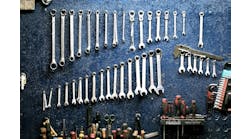One of the advantages of being retired is time. The time to reflect on all the things you never had time to think of. What is really fascinating about having that kind of time is the incredibly diverse range of things about which you find yourself thinking.
I think about process and systems, opportunities and potential dangers. But, especially now, I think about balance: the tightrope we have to walk between personal freedom and professional obligation. I think about that and the critical role leadership, management, competency and culture will all play in the intricate ballet you will have to choreograph in order to achieve success.
But, as far as I can see, it is a balance that must first be achieved between capability and capacity.
Capacity? Capability? Aren’t they the same thing? Not necessarily.
It depends upon how those two terms are defined and the context in which they are used. I’ve always thought of capacity as the limitations or advantages of your physical plant: how many bays, how many lifts, climate, equipment, available technology, etc. Capability is what your individual technicians are able to do with that space: their education, training, skills, abilities, drive and ambition.
Engineers and scientists like to use venn diagrams to illustrate what happens when conditions like capacity and capability overlap, leaving you to wonder about the “sweet spot” they are likely to form between them.
With a little bit of imagination, you should be able to visualize a number of different possibilities that can profoundly impact both your life and the success of your business — that is, if you’re able to separate the two.
For instance, what happens if capacity exceeds capability?
Your immediate response might be: “That’s easy! Hire more technicians.”
Where are you going to get the techs? The last time I checked, they weren’t so easy to find.
And, what if the techs you have are performing at 100 percent tech efficiency or close to it? How long will it take for someone new to reach that same level of excellence? How long will it take them to fit in?
Perhaps, more important, how likely are they to accept and embrace the company’s culture?
How disruptive is hiring someone new likely to be, and what’s that likely to cost? I can almost promise you it will be both expensive and disruptive.
So, is hiring a “new” tech really the right answer? Probably not. There are too many variables for it to be the right answer, like technician efficiency.
If all your technicians aren’t working at 100 percent, you probably need to ask yourself this one simple question: “If not, why not?”
Is there a training issue? An issue of technician education? And, what would happen if your techs reached 100 percent technician efficiency? What would that do to your overall service bay productivity?
Is your service bay productivity 100 percent? Are you selling all the hours you have to sell? How would that impact the relationship that exists between capability and capacity?
These are questions of competency. But they are elements of leadership, management and culture that come in to play as well.
What happens when capacity isn’t the problem? When education and training drive an incredible increase in technician efficiency and shop productivity and capability increases dramatically?
What happens when your technicians are capable of more and the bottleneck is the physical limits of your location?
Most shop owners who have been down this road would probably shake their heads and insist the only time to expand is when your appointments are booked out two weeks in advance.
You can decide to expand your physical plant in the hope that business and profits will increase with the increased capacity, but, at the very least, it will require a massive marketing effort to fill those extra bays or utilize that new equipment.
So, it’s better to have your business busting at the seams first, and then consider expanding. It’s better to have your business balanced with capacity and capability almost perfectly matched.
I left the question mark in the middle of the first three diagrams because I want you to think about what happens there. I want you to understand that if your margins are “right,” and capability and capacity are matched, magical things can happen.




